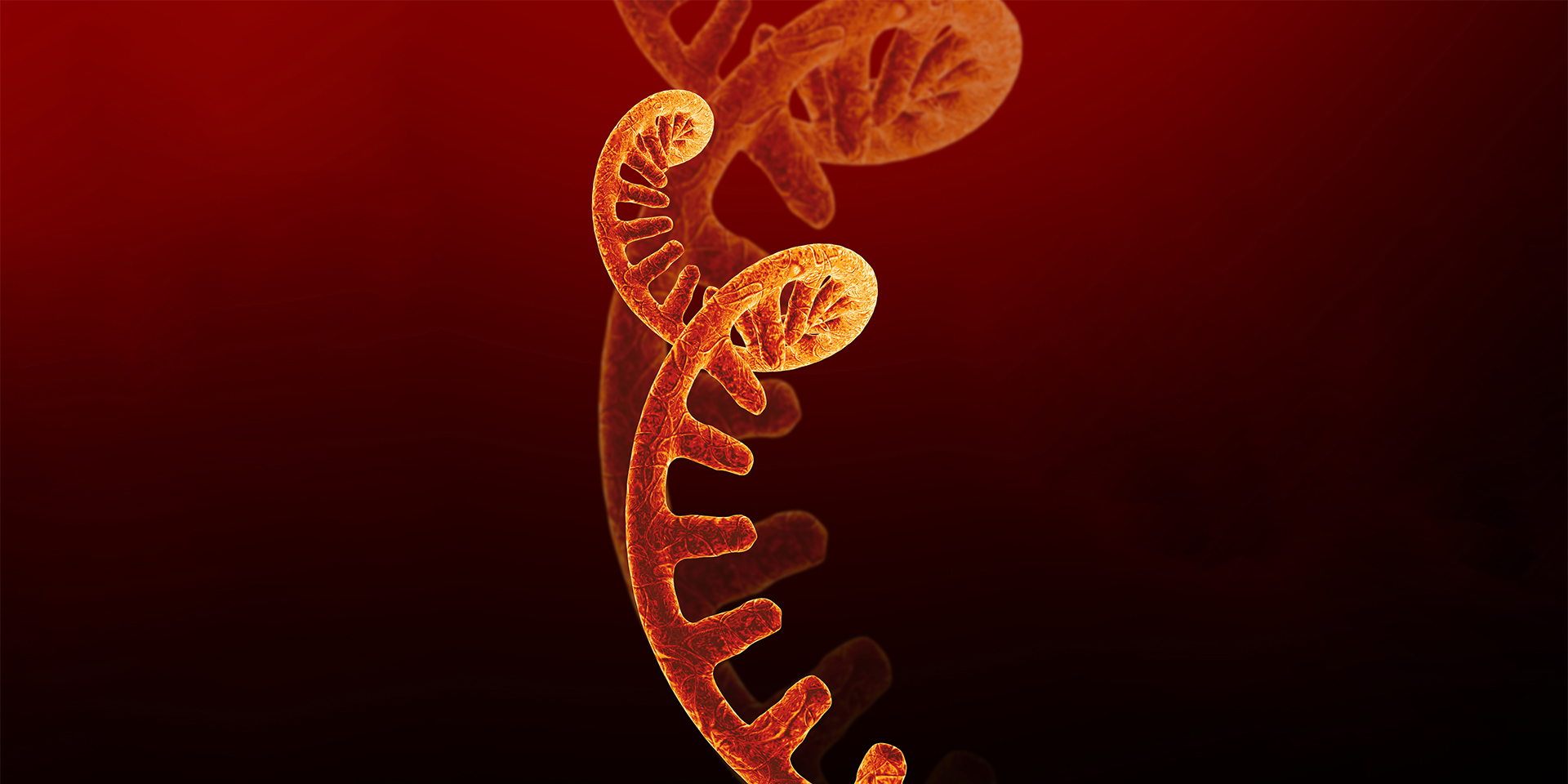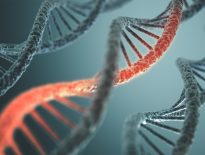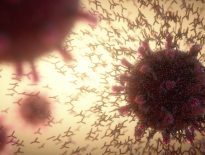What are mRNA vaccines? How do they work?
To understand what mRNA vaccines are, we should first understand what messenger ribonucleic acid (mRNA) is. The human body is made up of tens of trillions of tiny “bricks” called cells. Cells differ greatly in shape, size, and function, but they share some organizational and operational principles. For instance, all cells have a core called the nucleus (mature red blood cells lose their nucleus, a phenomenon that has long puzzled researchers, but which today is starting to be understood). The nucleus of each cell contains deoxyribonucleic acid (DNA).
What are DNA and mRNA?
DNA can be seen as the hard drive of the cell, a huge encyclopaedia. This encyclopaedia contains 23 volumes (scientists call these “volumes” chromosomes), in two editions: one from the mother and one from the father.[1] Each volume contains many recipes, similar to a cookbook (a “recipe” here represents a gene); only it’s not about cake or soup recipes, but protein recipes. Each gene contains the recipe according to which a certain protein can be built. Just as sometimes in a cookbook a recipe can have several variations (for example, with small adaptations, the same recipe can allow you to use either strawberry, cherry or banana ice cream), sometimes a gene allows the building several related proteins.
If you had a huge 23-volume encyclopaedia at home, in your library, with each volume containing several thousand pages of fine print, and you had to prepare a type of food found in volume 8, at page 234, you probably wouldn’t think that the best option would be to bring the whole book to the kitchen with you and start working on the recipe. It may be easier to just transcribe that one recipe onto a piece of paper and only bring that piece of paper into the kitchen. Or you might make a photocopy of it, which is just a more convenient way to transcribe it. This is where messenger RNA comes in.
mRNA is to DNA what the transcript sheet is to the volume in the encyclopaedia. Just as you would leave the big book on the shelf, and only bring the recipe page to the kitchen, similarly, while the primary information is stored in the DNA, proteins are produced outside the nucleus (in the cytoplasm, for those who are not afraid of the word). The role of the paper containing the information transcribed from the volume of the encyclopaedia is taken over in the life of a cell by the messenger RNA molecule.
How do “classic” vaccines work?
Vaccine technology has evolved over time. So much so that there have been several variants of vaccines used before those developed to counter COVID-19 (which I have called here, to shorten the term, “classic”, although some are actually quite recent), but all those vaccines are based on a common concept. They contain either portions/fragments of the pathogen against which protection must be provided (e.g. virus fragments, one or more proteins from the “body” of the virus) or contain an attenuated, tamed form of the pathogen (e.g. a live virus that does not cause any disease at all or causes only a very mild form of the disease).
In every situation, special subpopulations of white blood cells in the body (more specifically, lymphocytes subpopulations) recognize certain portions of the proteins in the vaccine and form special “bullets” against them, called antibodies. When the virus (for example) later infects the vaccinated human body, the “bullets” will target the proteins against which they were biosynthesized and, since the proteins are part of the virus, the virus itself will be targeted and deactivated by a more complex process in which antibodies play a key role.
Therefore, it is important for any vaccine to have at least one virus protein (or, depending on the case, another infectious agent) against which to form antibodies. For this reason, some newer vaccines (but considered by many to be “classic”) do not even contain fragments of the virus, but only one or more virus proteins, obtained through biotechnology.
How do mRNA vaccines work?
Drawing on the fact that mRNA is like a recipe that contains information on how to form a certain protein, we can say that anti-COVID mRNA vaccines contain the recipe for the protein that forms the crown or the “spikes” of the SARS-CoV-2 virus, called the S protein. Once inside the cell (after injection), the mRNA in the vaccine, which is specially designed in this way, will allow the formation of small amounts of the S protein.
Since it is foreign to the proteins of the human body, the newly formed S protein will not be recognized by the cells of the immune system. They will analyse it and form specific antibodies against it, like in the case of a classic vaccine. The only key difference from a classical vaccine is that instead of injecting a protein (protein S), mRNA molecules are injected, which contain the recipe for making that protein.
Assessing the risk of DNA modification by the mRNA
Let us go back to the comparison with the encyclopaedia (DNA) and the recipe transcribed on a single page (mRNA). The encyclopaedia is on the library shelf, and the recipe, once transcribed, is in the kitchen. In other words, the DNA is positioned in the nucleus, while the messenger RNA, even if it is transcribed in the nucleus (as we transcribe the recipe in the library), is used in the cytoplasm.
The cell is organized in such a way that it allows the messenger RNA, once formed in the nucleus, to leave it and reach the cytoplasm, but not the other way around. The mRNA does not enter the nucleus from the cytoplasm.
Just as a transcribed paper is unlikely to be included as a separate page in that encyclopaedia, the likelihood of messenger RNA information being included in DNA is very small. There are a small number of situations in which, based on mRNA, DNA can be formed, but these situations are not present when administering mRNA vaccines against COVID.
An intuitive comparison, which explains this impossibility is the following: theoretically it is possible for someone to print a transcribed sheet, to open the volume of the encyclopaedia, to insert the respective sheet and, even to change the page numbering. However, in practice, this would suppose owning specialized equipment that a person who only has a transcribed piece of paper could not own/make.
Is it really a vaccine?
Although some cantankerous people claim that this medicine is not really a vaccine, it must be said that the European legislation, which is familiar with research in this field, has described the technology as a vaccine since as long ago as 2009.
The technology of mRNA-based vaccines has been established now for at least 10 years and there was sufficient knowledge in 2009 for the definition of gene therapy drugs in the 2009/120/EC Directive to explicitly exclude vaccines against infectious diseases from the list of gene therapies. In other words, since 2009, the European Union has recognized that a drug containing recombinant nucleic acid is a vaccine, not a form of gene therapy, if used for prophylactic purposes against infectious diseases.[2]
How long does mRNA last in my body if I get vaccinated?
One of the most beautiful parts of mRNA technology is that it stays in the body for a very short time. One of the key differences between DNA and RNA is its stability: DNA lasts for days, weeks, months, years, centuries, millennia.
Today, researchers are analysing DNA from buried fossils, forgotten for millennia in the depths of the planet, and although there is a tendency for that specific DNA to be rather fragmented, DNA analysis is still possible. For the same reason, DNA samples can be taken years after a crime has been committed, and it is still possible to establish someone’s guilt or innocence based on DNA analysis. In contrast, mRNA is extremely unstable. Usually, it survives a few hours, and with a little luck, at most 4-5 days.
Therefore, the fears that we do not know what kind of damage this vaccine will cause in 10 or 50 years in our body are unfounded, because those few micrograms of mRNA that are administered with today’s vaccines will not survive more than 4-5 days. I recently came across the following comparison: the mRNA vaccine is like an e-mail message that explains to the immune system, in detail, what the enemy looks like, so that it can prepare its defence, after which the e-mail message destroys itself, in a few hours or days, without leaving any trace of the original message.
Professor Robert Ancuceanu, PhD, teaches at the Faculty of Pharmacy, “Carol Davila”, the University of Medicine and Pharmacy, Bucharest.
Additional readings:
- Gerald Bergtrom, Cell and Molecular Biology. What We Know & How We Found Out, Creative Commons (cc-by) publication, available at https://open.umn.edu/opentextbooks/textbooks/244.
- Janet Iwasa, Wallace Marshall, Karp’s Cell and Molecular Biology. Concepts and Experiments, John Wiley & Sons Inc., Hoboken (NJ), 2016, (p. 366-450).
- John Rhodes, How to Make a Vaccine: An Essential Guide for COVID-19 and Beyond, The University of Chicago Press, Chicago and London, 2021.



















